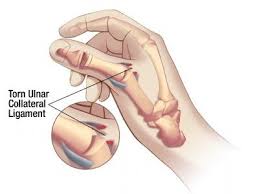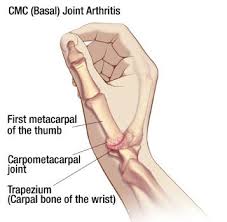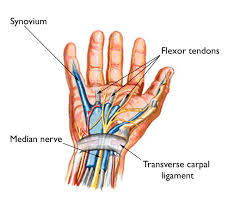You use your hands for almost everything daily, and this overuse can cause injury to ligaments and muscles that traverse this area. Due to its complex articulation, the thumb is more susceptible to problems. Most of the times, it is not serious, and repetitive stress is often the cause. However, some more serious conditions may also be culprits.
Causes of Pain Between Thumb and Index Finger
1. De Quervain's Tenosynovitis

You develop this condition when the tendons around the base of your thumb become constricted or irritated. In this condition, you are likely to experience severe pain on the thumb side of your wrist. The most common symptoms include the following:
- Pain and swelling around the base of the thumb
- Difficulty moving the wrist and thumb
- A 'sticking' sensation when trying to move your thumb
2. Skier's Thumb

You develop this condition because of an injury to the soft tissue or ligament that connects the bones of your thumb. You usually experience symptoms several hours after the injury. The symptoms may include:
- Severe pain between thumb and index finger, usually in the web space
- Tenderness and swelling of the thumb
- Difficulty grasping anything between your index finger and thumb
- Discoloration of your skin over the injured area
- Pain that becomes worse with movement
- Pain in the wrist
3. Basal Joint Arthritis

You develop this condition because of the damage to cartilage in the bones as the cartilage begins wearing away with the passage of time. This makes it difficult to perform small motor tasks. More joint damage occurs when you continue to use your thumb. The most common symptoms of basal joint arthritis or thumb arthritis include the following:
- Pain when you clasp or grip something, especially between your thumb and index finger
- Pain and tenderness in your thumb
- Stiffness in the thumb
- Swelling at the base of the thumb with a bony bump
4. Carpal Tunnel Syndrome

This hand and arm condition may cause tingling, numbness, and other symptoms. Caused by a pinched or compressed nerve in your wrist, the condition first causes numbness but then causes pain between thumb and the index finger.
Treatment for Pain Between Thumb and Index Finger
1. Treat De Quervain's Tenosynovitis
To treat this condition, your doctor may prescribe medications, try therapy, and even recommend surgery.
- Medications: OTC pain relievers such as naproxen and ibuprofen work fine to reduce pain and swelling. Sometimes, you may have to take injections of corticosteroids. When taken within the first six months of experiencing pain, these injections help you recover completely.
- Therapy: Your doctor may order therapy that involves immobilizing your wrist and thumb with the help of a brace or splint. You also need to avoid repetitive thumb movements and avoid pinching anything with your thumb. Applying ice on your thumb may also help. You may also have to work with an occupational or physical therapist to learn some exercises to strengthen your muscles and reduce stress on the wrists.
- Surgery: You require surgery in serious cases only. The procedure involves opening the sheath to remove pressure from your tendons to restore mobility to the joint. Be sure to talk to your doctor and learn carefully how to strengthen, rest, and rehabilitate your joint after surgery.
2. Treat Skier's Thumb
- Put an ice pack directly on your thumb for about 35 minutes at a time. Do it twice a day and continue until the pain subsides a bit.
- Do not move your thumb and consider applying an ACE wrap or use wrist brace to keep your thumb and wrist in the neutral position.
- Take pain relievers such as ibuprofen or acetaminophen. Do not take them if you have stomach problems.
You might need surgery in case these above measures do not produce desired results.
3. Treat Basal Joint Arthritis
There are different treatment options to relieve pain between thumb and index finger caused by basal joint arthritis. For instance:
- You may consider wearing a splint to support your joint and prevent excessive movement of your wrist and thumb. Wearing a splint reduces pain, encourages proper position of your wrist, and provides your joint with ample rest.
- Your doctor may prescribe medications to relieve pain. The medications usually include naproxen or acetaminophen, but prescription pain relievers such as tramadol or celecoxib may also be required in some cases.
- You may have to take corticosteroid injections when a splint and pain relievers do not work. These injections work well to reduce inflammation and relieve pain.
- You may have to undergo a surgical procedure when other options do not work. Several options are available in this regard, including osteotomy, joint fusion, trapeziectomy, and joint replacement or arthroplasty. Talk to your doctor about pros and cons of selecting different procedures.
4. Treat Carpal Tunnel Syndrome
You usually do not need treatment because this condition can get better on its own. When the pain persists, you can try other treatment options. For instance:
- You can find some relief by wearing wrist splints, especially at night.
- You may have to take corticosteroid injections to relieve pain.
- You need surgery in severe cases or if your symptoms do not improve within six months after receiving other treatments.
